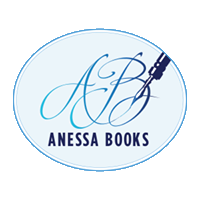 How do you write? Do you plot? Do you use notecards? Sticky-notes? Fictionary.co? Or Plottr? Is Scrivener your go-to tool to plot and write? What’s your process and how tied are you to it?
How do you write? Do you plot? Do you use notecards? Sticky-notes? Fictionary.co? Or Plottr? Is Scrivener your go-to tool to plot and write? What’s your process and how tied are you to it?
I’ve been thinking about that after working with a client who hasn’t been able to finish a book in five years. Five years! That’s a little terrifying to me – and I’m just coming off a two-month hiatus. (Two months, by the way, is the longest I’ve ever gone without writing in nearly 20 years.) Granted, she’s been having health and other family problems, but still… five years.
After listening to her talk about all of the absolutely incredible ideas she has for a number of books (she rattled off at least 9 to me in less than half an hour), I asked her about her process for writing. That, she told me, hasn’t changed. She’s published a number of books through traditional publishers and has her process down.
So I told her that perhaps she needed to switch it up. Change it around. Try something new. In the past five years, she hasn’t finished a book. Perhaps the way she’s approaching them needs to change.
She considered this and agreed that it certainly couldn’t hurt.
So, now, I’m asking you. What’s your process? Does it work? Do you do the same thing for every single book you write?
I don’t, although there are some parts of the process that have settled into a routine.
I have my story idea, and it does, I am so sorry to say, frequently begin with an idea for a plot rather than characters. But I very quickly shift gears so that I’m creating characters rather than working on the plot because I prefer character-driven books. I prefer it when it’s the characters’ needs, goals, and desires drive the plot forward.
Once my hero and heroine are determined, I figure out what needs to happen to get them to their goals. What do they need to experience to grow, and learn? From there, I get my basic plot. I make sure the romance is there with all of its ups and downs and that the story as a whole follows the basic story structure I know my readers expect.
And then I take it to my husband.
Most of the time, he tells me my heroes aren’t heroic enough, my romance is too easy, and there isn’t enough conflict and he’ll work with me to turn my whole plot inside and upside and we come out the other end with an entirely different book. It’s a harrowing experience.
I think go back to my plot and figure out the details of the scenes for the first half of the book and some general scenes for the second half (because I know I’ll be revisiting and revising halfway through), and I’ll write out a W-graph. After that, it’s all up to a whim.
Do I put all my scenes down on index cards? Sometimes. Do I put it all on Plottr? Sometimes. Do I just start writing and see how things go, allowing my brain to fill in the details as I go? Sometimes. And sometimes I will plot out each scene as I get to it by doing some free-writing before I actually write the scene. Each book, to me, wants to be organized differently. Each book needs different tools. Happily, I’ve got a huge toolbox with many, many options both electronic and not. I use them all.
So, I’ve got my process. I develop my story a particular way and I write it and keep track of what I write nearly the same way with every book (I’ve been using My Writing Journal for the past four books and I’m loving it). But if I needed to… if my process stopped working… I’d drop it in a second and try something new because to me it doesn’t matter so much how I do, than that I get the book written.
And what about my client? Yes, she’s going to try something new. I gave her some ideas that she felt comfortable with and is heading back to work. Hopefully, this time she’ll get the book done and move on to the next.
